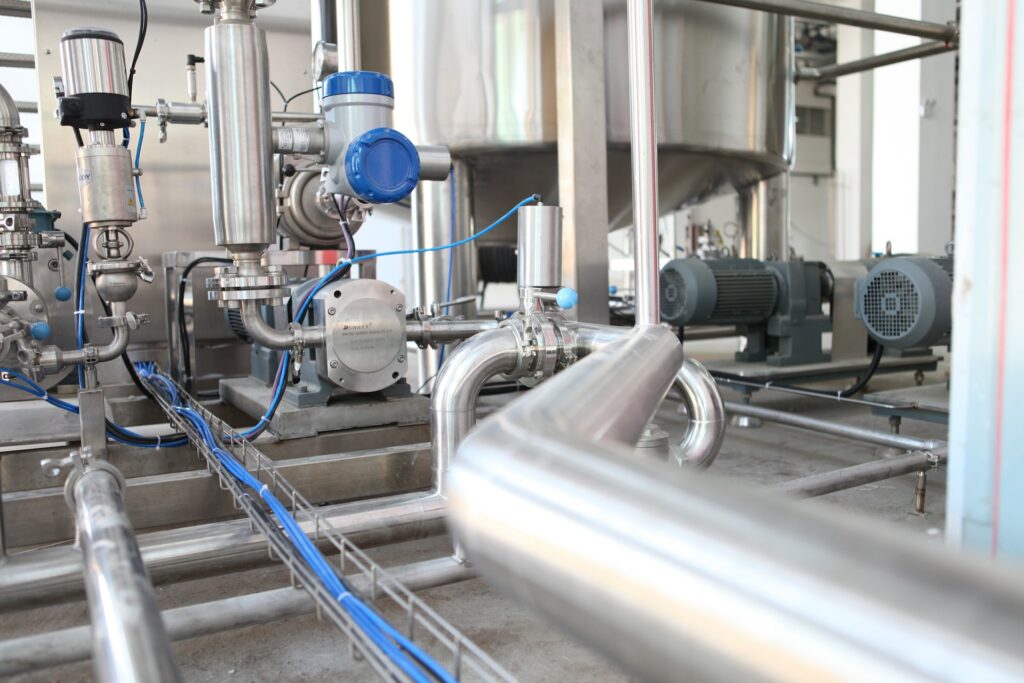Lubricants play a vital role in the proper functioning and maintenance of industrial equipment. In this comprehensive guide, we will discuss different types of lubricants, their properties, and quality testing methods. Our aim is to provide a complete understanding of lubricants, enabling you to choose the right one for your specific application.
Introduction: Lubricants are used to reduce friction and wear between two surfaces in contact. They also dissipate heat and protect the equipment from corrosion. Lubricants can be liquid, semi-liquid, or solid in form. The choice of lubricant depends on the application, equipment type, and operating conditions.
Types of Lubricants:
- Mineral-based lubricants – Made from crude oil, these lubricants are the most commonly used. They offer good stability, viscosity, and lubricity at an affordable cost.
- Synthetic lubricants – These are manufactured using chemical processes and offer superior performance compared to mineral-based lubricants. They offer better resistance to high and low temperatures, oxidation, and shear forces.
- Bio-based lubricants – These are derived from renewable sources such as vegetable oils, animal fats, and other biomass. They offer good biodegradability, low toxicity, and are an environmentally friendly alternative.
- Greases – These are lubricants that have a semi-solid consistency. They are used in applications where liquid lubricants are not suitable, such as high-pressure and high-temperature environments.
Quality Testing Methods:
- Viscosity – This measures the lubricant’s resistance to flow. It is an essential property that affects the lubricant’s ability to reduce friction and wear.
- Flash Point – This is the temperature at which the lubricant emits enough vapor to ignite in the presence of a flame. It is a measure of the lubricant’s fire resistance.
- Pour Point – This is the temperature at which the lubricant loses its ability to flow. It is a measure of the lubricant’s low-temperature performance.
- Acid Number – This measures the lubricant’s acidity level. A high acid number indicates the presence of contaminants or degradation of the lubricant.
- Oxidation Stability – This measures the lubricant’s resistance to oxidation. Oxidation can cause the lubricant to break down, leading to sludge and varnish formation, reducing the lubricant’s performance.
Conclusion: In conclusion, choosing the right lubricant for your equipment is crucial to ensure its proper functioning and maintenance. Mineral-based, synthetic, bio-based, and greases are the most commonly used lubricants. Quality testing methods such as viscosity, flash point, pour point, acid number, and oxidation stability are used to ensure the lubricant’s performance and longevity. Use this guide to make an informed decision when choosing the right lubricant for your application.
To further expand on the types of lubricants, mineral-based lubricants are the most commonly used lubricants in the industry. They are made from crude oil and offer good stability, viscosity, and lubricity. However, they have limitations in terms of their performance in high and low temperatures, resistance to oxidation, and shear forces.
Synthetic lubricants, on the other hand, are manufactured using chemical processes and offer superior performance compared to mineral-based lubricants. They have a higher resistance to high and low temperatures, oxidation, and shear forces. They also have longer lifespans, which can lead to reduced maintenance costs.
Bio-based lubricants are derived from renewable sources such as vegetable oils, animal fats, and other biomass. They offer good biodegradability, low toxicity, and are an environmentally friendly alternative. They also have good thermal and oxidative stability, making them ideal for high-temperature applications.
Greases are lubricants that have a semi-solid consistency. They are used in applications where liquid lubricants are not suitable, such as high-pressure and high-temperature environments. Greases are usually made by mixing a base oil with a thickening agent such as lithium, calcium, or aluminum soap.
In terms of quality testing methods, viscosity is an essential property that affects the lubricant’s ability to reduce friction and wear. Viscosity measures the lubricant’s resistance to flow and can be measured using a viscometer.
Flash point is another quality testing method that measures the lubricant’s fire resistance. It is the temperature at which the lubricant emits enough vapor to ignite in the presence of a flame. A high flash point indicates better fire resistance.
Pour point is the temperature at which the lubricant loses its ability to flow. It is a measure of the lubricant’s low-temperature performance. A low pour point is desirable for lubricants used in cold environments.
Acid number measures the lubricant’s acidity level. A high acid number indicates the presence of contaminants or degradation of the lubricant. Acid number is an essential quality testing method for identifying lubricant degradation.
Oxidation stability measures the lubricant’s resistance to oxidation. Oxidation can cause the lubricant to break down, leading to sludge and varnish formation and reducing the lubricant’s performance. Oxidation stability testing helps identify lubricants that are prone to oxidation and need to be replaced more frequently.
In conclusion, understanding the different types of lubricants and quality testing methods is crucial to selecting the right lubricant for your equipment. Consider the operating conditions, application, and equipment type when choosing a lubricant. Regular quality testing will help identify when the lubricant needs to be replaced to maintain optimal equipment performance.

